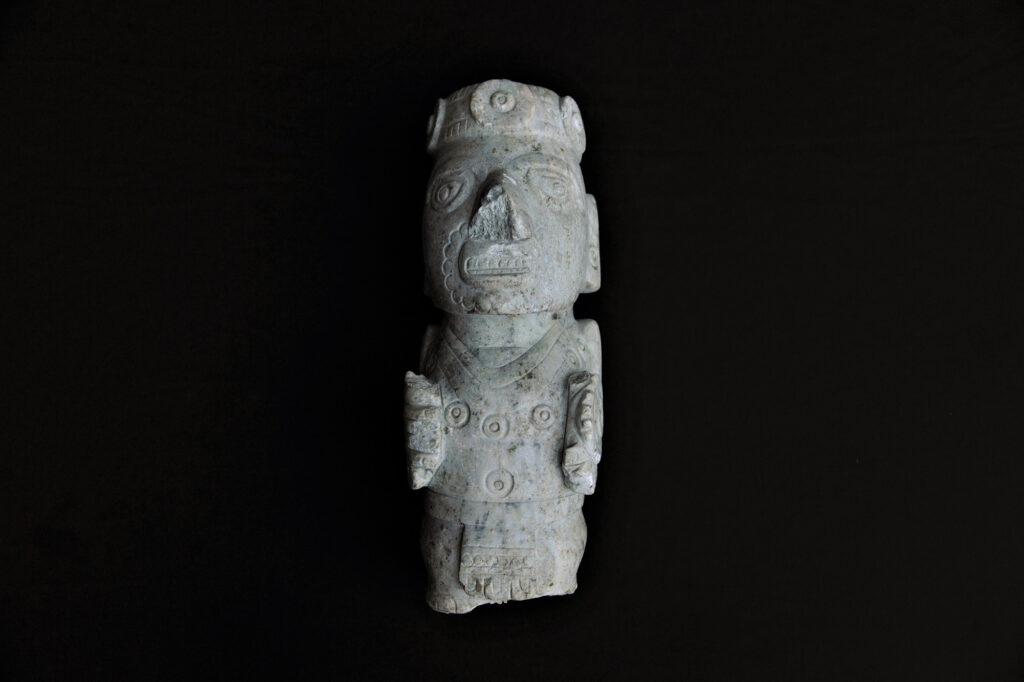Ancient Marble Aztec God Of Art, Dance And Games Statue Goes On Show
This ancient marble statue of the Aztec god of art, dance and games has gone on show in Mexico City.
The statue, which was uncovered in the Guerrero neighbourhood of Mexico City on 17th July 2019, has now gone on show at the Museo del Templo Mayor (Main Temple Museum) in the heart of the Mexican capital.
The marble statue, which depicts the god Macuilxochitl-Xochipilli, is 36.65 centimetres (14.4 inches) tall, weighs about five kilogrammes (11 lbs) and was reportedly part of the ‘last stage’ of the Aztec capital city Tenochtitlan, which became Mexico City after the European conquest of the Aztec Empire.

Macuilxochitl-Xochipilli is the deity of art, dance and games, as well as of flowers, as told in Aztec mythology.
The National Institute of Anthropology and History (Instituto Nacional de Antropologia e Historia; INAH) said in a statement obtained by Newsflash: “The general director of INAH, Diego Prieto Hernandez, and the Secretary of Culture of Mexico City, Vanessa Bohorquez Lopez, inaugurated the exhibition in the Archaeological Zone of the Templo Mayor.
“This is the first time that this archaeological piece has been unveiled.”

Prieto Hernandez said: “After being hidden for five centuries, this Xochipilli of the great Tenochtitlan is revealed to us here, not only to contemplate the ecstasy that characterises this deity, but to recognise him as the bearer of good omens, splendid dawns, beautiful dances and poetry, of the happiness that we all deserve and long for.”
And Bohorquez Lopez said: “Two years ago, Mexico City revealed one more of its secrets, another buried mirror. The explorations that found this piece in the former neighbourhood of Cuepopan reveal the wealth of heritage that continues to give us deep roots, the result of millennia of development of the original civilisation, of the women and men of the ancient Cemanahuac.”
The director of the Templo Mayor Museum, Patricia Ledesma Bouchan, said that the exhibition of the Xochipilli-Macuilxochitl sculpture will remain in place until 14th February 2022 in the lobby of the new entrance to the museum, adding that it would later be incorporated into the museum’s permanent collection.

The INAH said: “At a depth of 1.5 and 3 metres, on 17th July 2019, archaeologists noticed the existence of this figure that, except for the loss of a fragment of its nose, was in perfect condition.”
The INAH added that the deity appears to be seated and wearing a loincloth, as well as jewels “typical of the nobility”. The statue, according to the experts, appears to be wearing a diadem, “earmuffs”, and a necklace.
The experts also said that the statue appeared to be holding a musical instrument in its right hand. They said that it was an omichicahuaztli, which is a musical instrument made with bone.

The statue also appears to be holding a shield called a ‘chimalli’ in its left hand.
The INAH explained that “Xochipilli and Macuilxochitl are closely related gods, so the sculpture shows attributes of the former, such as the headdress, the necklace with chalchihuites and the chimalli. Of the second divinity, the mouth painting that resembles a flower stands out, but in reality it represents the palm of a hand.
“Macuilxochitl-Xochipilli, whose calendrical name is 5-Flor, was linked with joy, music and song, as well as with the rising sun, the dawn sun, the child sun.” It added that the deity “had an important role” during specific events during which nobles “participated in banquets, dances and hunts, and paid him honours.”



